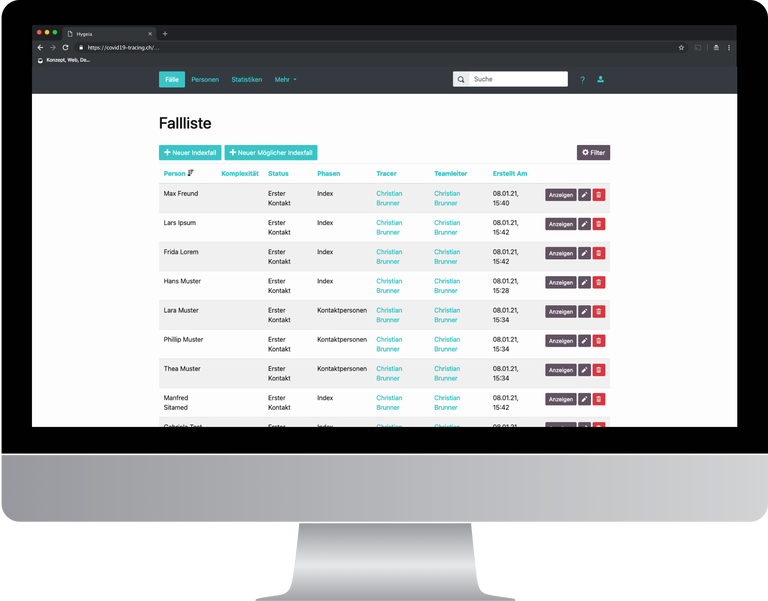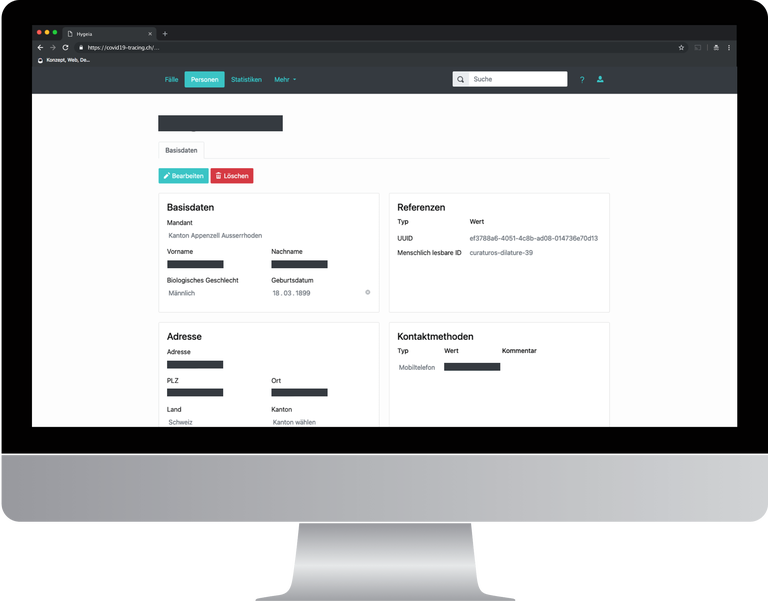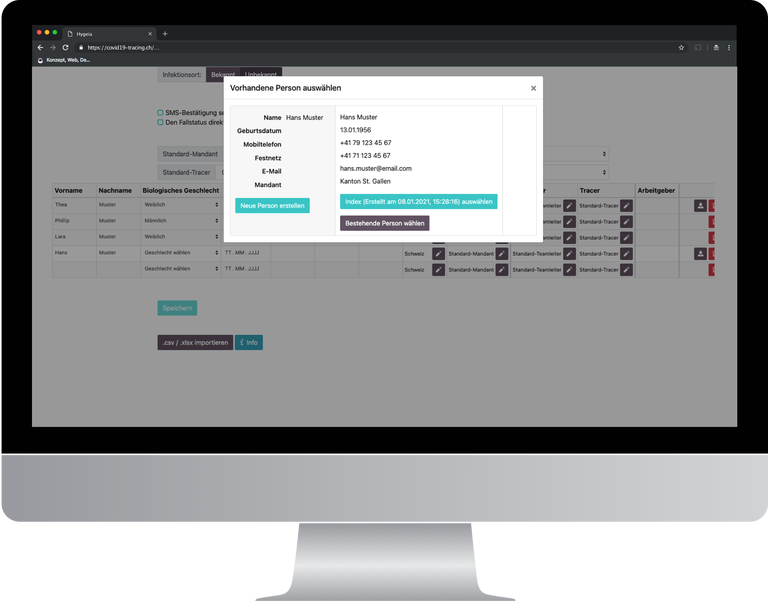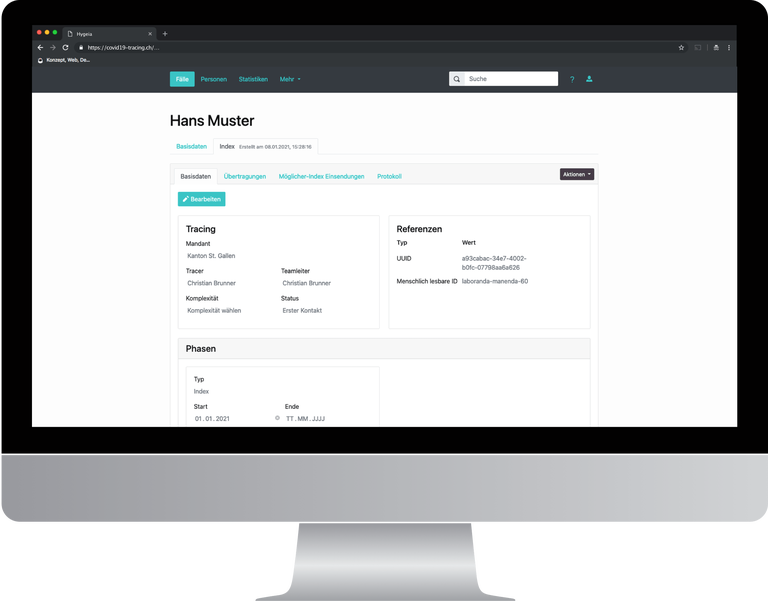
Hygeia – Cantonal Contact Tracing Application
By the Office for Military and Civil Protection of the Canton of St. Gallen, we were commissioned to develop an application for the acquisition and processing of personal data in connection with the corona pandemic for the benefit of contact tracing. The rapid spread of Covid19 in the population and its containment poses an enormous challenge for the cantonal authorities, especially when it comes to collecting and managing data. As one of the central control measures in the tracking of transmissions, we were to develop an application that provides the contact tracing with the necessary basis for fulfilling its mandate.
Under these circumstances, the time factor was crucial. A technical concept and the framework conditions for a first, functional version were developed shortly. It primarily includes the recording of people who tested positive with all relevant information such as contact and address data, regional affiliation, data on infection, and the status of the disease. A distinction is made between index cases (tested positive) and potential index cases (contacts of people who tested positive).


New cases can be entered manually or imported using an existing list (.csv or .xlsx). Each entry is checked for duplicates and, if necessary, provided with a note and the possibility of merging. The recorded cases appear in the case list and can be viewed and edited from there. The list can be filtered according to various criteria and thus enables the targeted follow-up of existing cases and their contact persons.


A case dossier is made up of various components. The basic data includes personal and contact data, data on infection and the status of the disease as well as additional information such as symptoms and hospital stays, etc. Infection chains can be recorded and traced in the transmission section. All developments in the case and correspondences are recorded in the protocol. With further actions, messages can be triggered directly as SMS or e-mail to the person concerned, and isolation confirmations can be generated or sent.


In the statistics, visualized overviews of various factors can be called up for any period, sorted by cantons. It shows people in isolation, completed isolations, people in quarantine, end reasons for quarantine (e.g. asymptomatic contact persons), new cases, hospitalizations, etc.

The application is currently in use in the cantons of St. Gallen, Appenzell Ausserrhoden, and Appenzell Innerrhoden and is continuously being developed.